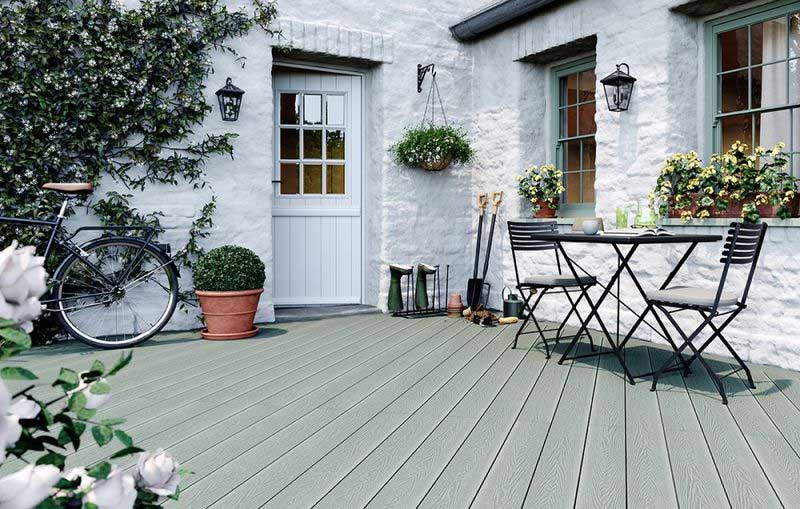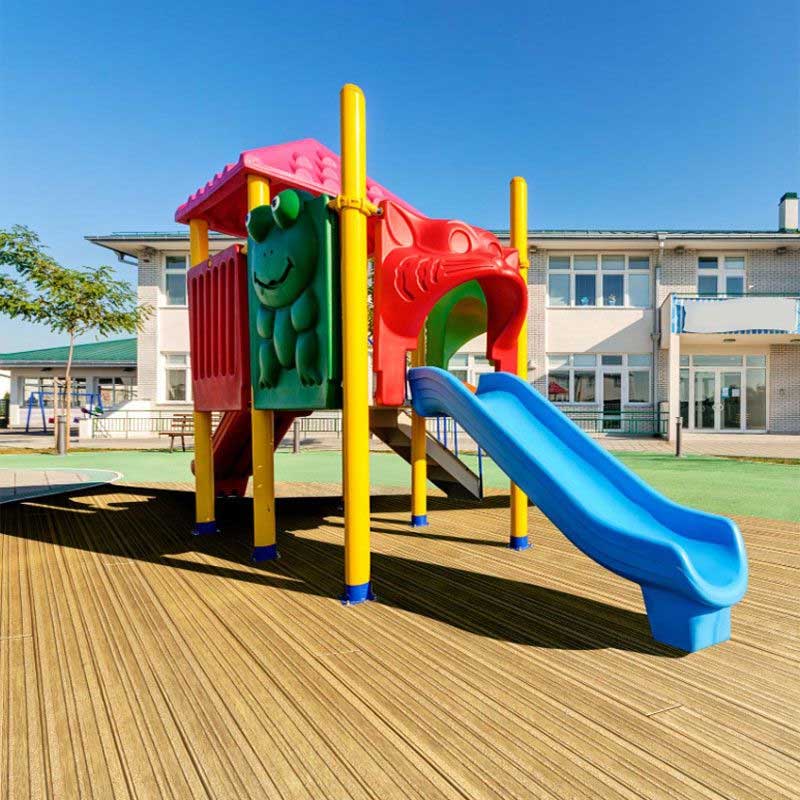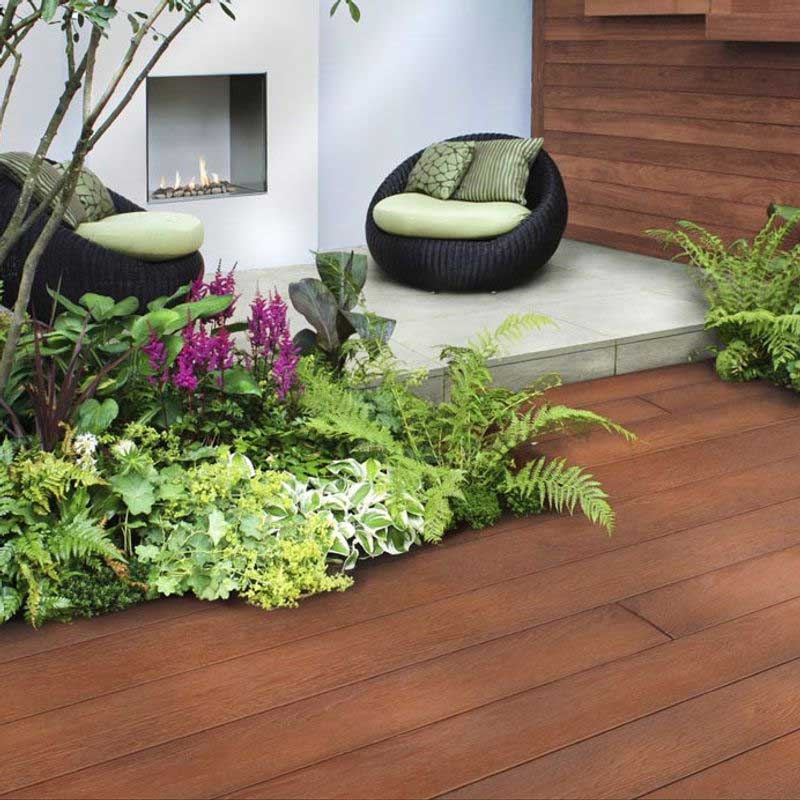Whether you’ve recently installed new composite decking or you’re restoring composite decking to its former glory, you’ll need to know the best ways to care for it long-term. The reasons why aren’t short, either. If you have stains, oil or mould on composite decking, this can be unappealing to look at and potentially cause more problems with the decking in future. That’s why we’ve packed this guide full of tips to ensure maintaining composite decking is easy.
Table of contents
- Why is composite decking maintenance and cleaning important?
- Removing mould on composite decking
- How do you clean composite decking?
- Protecting your composite deck from scratches
- What about a warping composite deck?
Why is composite decking maintenance and cleaning important?
Although composite decking is a tough material, it’s still prone to wear or staining over time. Especially since it’s exposed to the elements such as snow, rain, wind and even harsh summer sunshine. So, the important thing to do is make sure you clean up the decking as soon as possible to avoid further damage from risking a full replacement.
Now onto the different issues and how to deal with them.

Removing mould on composite decking
Composite decking isn’t free from mould. Exposure to the damp air outdoors will lead to the eventual growth of the fungal substance. Especially when decaying leaves, insects, dirt or debris are thrown into the mix.
Mould is a pain but not impossible to deal with. You can control it if done correctly.
Keeping the decking clean: The short-term solution
Making sure you regularly clean composite decking can do much for its appearance. Sweeping is an efficient, short-term way to stop leaves and dirt from sitting between the spaces on the board. If these aren’t removed, they can break down to form mould, moss and algae.

Keeping the decking clean: The long-term solution
Long-term, you need to make sure you deep clean the decking every three to four months. If not that often, a minimum of two times a year is recommended. Deep cleans are especially important before and after the hotter temperatures for summer roll in, so deep cleaning in the spring and autumn seasons is advisable.
How do you clean composite decking?
For good composite decking care, you’ll need to look at the following steps to make sure the deep clean of your decking is as thorough as possible.
What you will need
- Composite decking brush (soft bristle brush)
- Hose or pressure washer
- Soapy water
Step one: Clear the deck.
Any furniture or decorative ornaments need to be moved from the deck to allow for a clear surface to clean. The reason is dust and dirt are likely to stick to this and sit there, leaving you with a task half done. Even if you think you cleaned thoroughly around the items.
Step two: Deal with the dirt.
For this step, you will need a soft bristle brush for cleaning composite decking. This will be used to loosen the dirt on the decking, making it easier to clean and reducing splashes from the muddy liquid being washed off.
Step three: Time to wash the mess away!
Using a hose or pressure washer, clean the decking along the grain. This will prevent the dirt from getting stuck in the lines of the board and rid the deck of remaining dirt deposits. If you are using a pressure washer, you can typically adjust the pressure via the PSI settings to avoid risking damage to the decking material.
If you are dealing with mould, oil, grease or bird droppings, use soapy water to effectively clean the deposits from the surface.
Note: Make sure you refer to the decking manufacturer’s instructions as some decks can be damaged by the water pressure.
Additional step: Removing snow and ice.
If you’ve been unfortunate enough to have your deck covered in cold weather deposits like ice and snow, you need to take care when clearing this from the surface. The main thing to remember is to not use metal scrapers as these risk causing scratches to the deck. Opt for a plastic-edged shower and/or rubberised tools instead to reduce the risk of scrapes.
Composite deck maintenance doesn’t end there. There are ways you help protect the surface from scratches if you want to get the most use out of the surface.

Protecting your composite deck from scratches
Continuous foot traffic and weighty furniture may not be a major damaging factor for composite decking, but even this tough material can be worn over its long-term use. So, to reduce these risks, modifying your furniture and decorative items slightly will make a difference.
For furniture, for example, rubber or plastic pads on the legs of metal tables and chairs will reduce scratching and marking. With plant pots and ornaments, rubber mats can help these items sit in place without risking damage.

What about a warping composite deck?
Unlike other solid decking materials, composite decking is not prone to warping. Though you may have to keep an eye out for sagging.
Sagging issues occur because of how the decking was installed. Particularly when it comes to the joists as this leaves them with uneven spacing, leading to a sagging deck. So, if you do notice this, you will need to perform maintenance under the decking. Do check with the manufacturer before moving forward as you may need to install the joists or decking a certain way.

Are you trying to look for new composite decking? Check out our composite decking buyer’s guide for more advice about the different types of decking you can choose from. We also have an array of other help and advice, including explaining how you can use decking to level out those pesky sloping gardens and more.
















